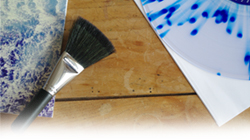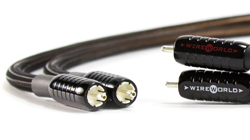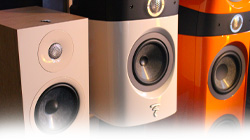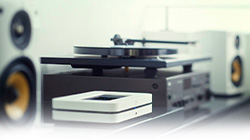
In a Hi-Fi system, we quite often do not pay enough attention to the audio cables used to connect the devices with each other. Indeed, audio cables are often the “weak links” of a Hi-Fi system and the question that people often ask us is: “is it really necessary to invest?”. Audio cables are not to be neglected since several playback problems can be linked to the cables of a Hi-Fi system! Find out more about the benefits of not neglecting audio cables thanks to maPlatine.com.
Furthermore, the goal of this shopping guide is to explain the benefits of investing in a Hi-Fi cable. Through this guide, we wanted to answer your questions while keeping in mind that other technical characteristics are taken into account when establishing the price of an audio cable. For more information, do not hesitate to contact our technicians by phone (+33 (0) 299 654 163) or by email (contact-inter@maplatine.com).
Do you want to know a little more about audio cables? Do not hesitate to read our guide about the different types of Hi-Fi cables and their role.
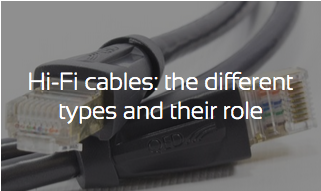
1. Audio cables: what impacts the price
The price of Hi-Fi cables can vary from a few euros to thousands of euros!! However, from the outside, we cannot always see the true differences between cables of different ranges. Several reasons can however impact the price of audio cables.
1.1 Design and R&D
The means put in place to make an audio cable can have more or less of an impact on its final price.
Indeed, the manufacturers of audio cables can deploy strong means in Research and Development to offer an innovating or particular technology. This can indeed impact the price of the Hi-Fi cable.
Moreover, when a company designs a cable and decides to file a patent for the technology used, this also represents a cost. Again, these costs can impact the final price of the audio cable.
1.2 Manufacturing process
The technology used to manufacture a cable will also justify a higher price. Indeed, some manufacturing processes are more expensive than others due to their technicality. In audio cables, there are several manufacturing processes.
For example, cryogenics freezes the components thanks to the cold.
There is also electroplating which is a process that is not used on all Hi-Fi cables and that will justify a higher price.
We can also mention the number of strands used and the tightening of these strands. Indeed, it is often said that the closer the strands are together, the less air there will be, and the better the sound restitution will be.
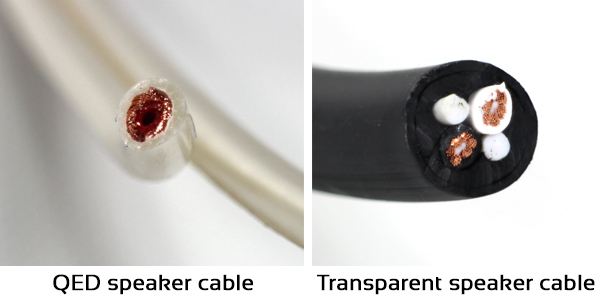
It is important to know that the more manufacturing steps there are, the more expensive the cable will be. Indeed, when there is an extra manufacturing step, additional intervention is required, and therefore more time and handling. The final cost of the audio cable will therefore be impacted.
Every technology and manufacturing process requires an important human know-how. Indeed, in high end Hi-Fi, there are several manufacturing steps that are not automatic (and thus manual) and the know-how of the employees is therefore a criterion to also take into account in the price of a Hi-Fi cable.
1.3 Materials used
In audio like in other fields, the materials used to manufacture products are more or less expensive. The material chosen to manufacture an audio cable will thus have an impact on its price.
In general, the purer the material (99.99%), the more expensive it is. This is also the case in the manufacturing of audio cables. Indeed, if we use a pure material to manufacture a conductor, the price of the cable will increase. In the manufacturing of audio cables, copper, gold, silver, rhodium, etc. are used.
These materials, in addition to being “pure” (almost untransformed), are also noble and rare. Once again, this justifies the price of a high quality Hi-Fi cable.
For example, a Hi-Fi cable with conductors made from OFC copper (ex: Ortofon 6NX-TSW-1010 phono cable) will be less expensive than a cable made from silver (ex: Furutech Silver Arrows-12 phono cable). This is simply because copper is less expensive than silver!
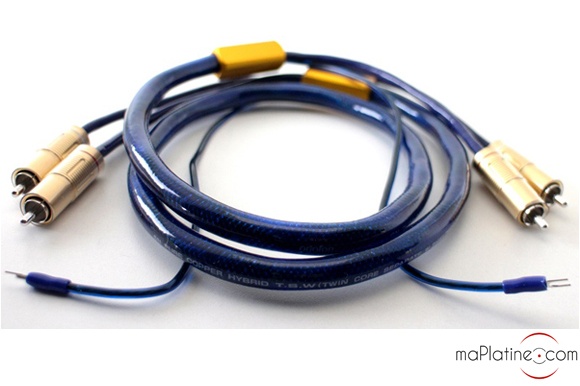
It is also possible that there is an additional plating on the material used, thus impacting even more the price. For example, the Nordost Odin phono cable has single-strand copper conductors covered with a thick layer of silver. The use of these materials and manufacturing process make it an audio cable of very high performance, thus justifying its expensive price.
2. A few examples of phenomena linked to cables
It is important to know that each technology used by the manufacturer gives a sound identity to the cable. And based on the material and components chosen, there appears to be or not to be certain colour in the sound restitution.
Moreover, do not believe that a manufacturer of Hi-Fi cables decides to use this or that technology or such pure and rare material for the sole purpose of making you pay for a more expensive cable. Indeed, the investments the brands make are based around the music and therefore made to favour the sound restitution by avoiding certain electrical or physical phenomena harmful to the sound restitution.
2.1 Interferences – cable shielding
In a Hi-Fi system, it is possible that some interferences are captured and affect your sound restitution. This phenomenon can be linked to the quality of your Hi-Fi cables, and more particularly their shielding.
It is important to make sure that the phono cables and the interconnect cables are well shielded otherwise they will pick up emissions from around. Phono cables from the brand Transparent are renowned for this, such as The Musiclink cable.
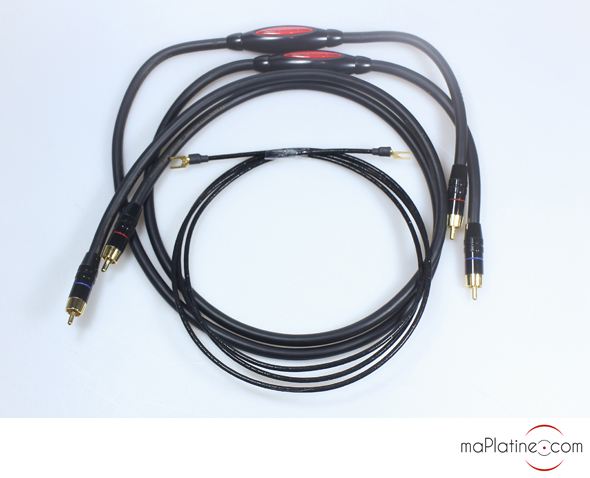
In the case of power cables and speaker cables, there rarely is a shielding since their main role is to transmit power and the investment would be disproportionate because unjustified.
2.2 Loss of signal information
In analogue and in audio, there can be a loss of audio signal information. The length of the cable is the cause of this. The longer the cable, the more there is a risk of a loss of information.
This phenomenon is mainly found on phono cables since the audio signal that passes inside the cable is very low (to the millivolt).
On interconnect cables, this will have less of an impact because the sound is already pre amplified upstream thanks to a phono preamplifier. This is also the case for speaker cables since the signal is amplified by the amplifier.
To overcome this problem, you need to place your turntable not far away from your phono preamplifier. You will therefore not need a long phono cable, thus limiting the risk of a loss of signal information.
2.3 Skin effect
In the field of audio cables, there can be what we call skin effect. This electromagnetic phenomenon is unique to speaker cables. This skin effect is characterized by a drop in the treble.
In theory, and for a single-strand cable, the bigger the cable (diameter), the less resistance there is. However, being thick, they quite often cause a drop in high frequencies. This can be explained by the fact that the low frequencies go through the center of the cable and the high frequencies around the center.
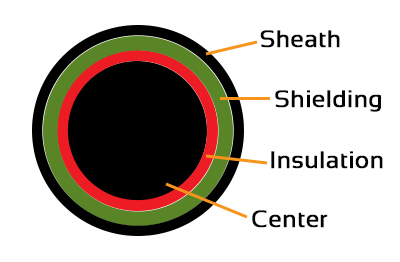
To overcome this problem, it is necessary to multiply the number of strands, thus making multi-strand cables such as the Atlas Equator speaker cables. This enables not to reduce the bandwidth in the extreme treble, all while keeping a balance in the bass. For example, a 2mm2 cable is often made of over 500 copper strands.
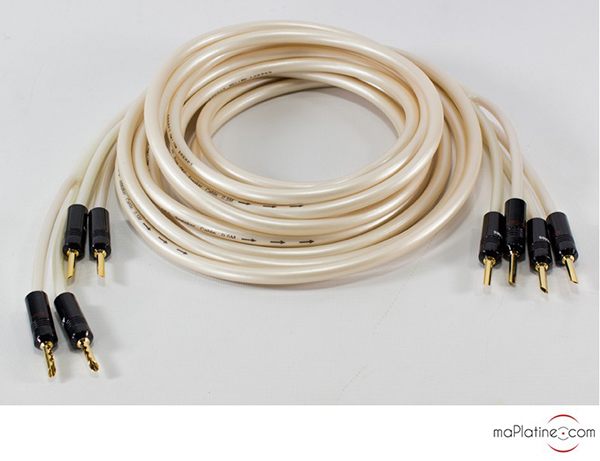
This technology however has a limit since the contact of each small brand between each other can create distortion in the high frequencies. Some cables, like the QED XT40 speaker cable, try to solve the problem in an ingenious way. A hollow tube was indeed added in the center of the cable for the bass and a multi-strand cable carries the treble.
Also, in order to increase the bandwidth in the treble and limit resistance, certain multi-strand copper cables receive a silver plating on the surface (ex: Tellurium Q Silver speaker cables).
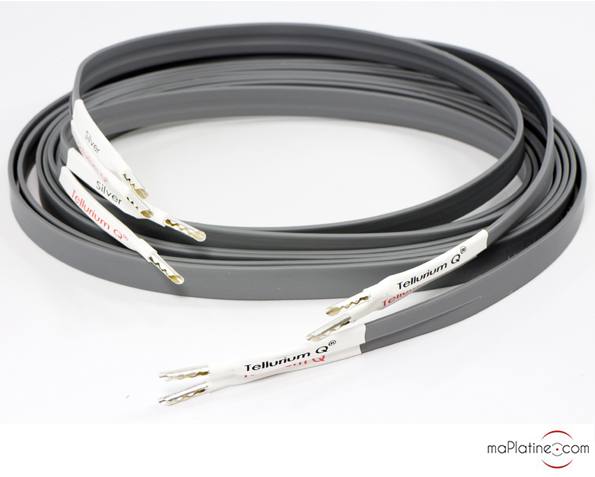
2.4 Memory effect
Memory effect is another phenomenon that is present in almost every Hi-Fi cable. The insulation keeps in memory, by static effect, the signal that passes at time T. The following signal at T+1, is added from the previous signal, even a small part. This results in a low precision sound restitution, with an unstable sound stage.
Some insulating materials are sensitive to this effect, like PVC. PTFE limits a little this effect. This insulation is found for example in the Audioquest Sydney interconnect cable. Nevertheless, in theory, the best insulation has always been air!
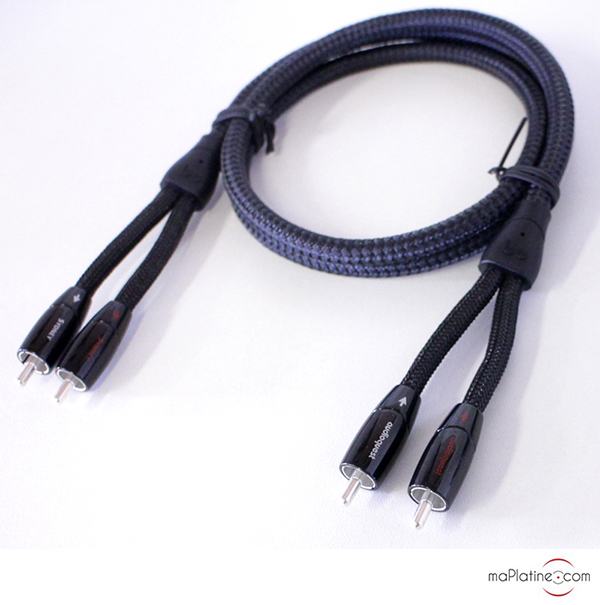
*****
We hope that this guide was useful in helping you learn more about audio cables and more particularly understanding their importance in a Hi-Fi system. For more information, do not hesitate to contact our technicians by phone (+33 (0) 299 654 163) or by email (contact-inter@maplatine.com).
![How do I choose a turntable ?]() How do I choose a turntable ? Discover
How do I choose a turntable ? Discover![How do I take care of my records?]() How do I take care of my records? Discover
How do I take care of my records? Discover![The different types of Hi-Fi cables and their role]() The different types of Hi-Fi cables and their role Discover
The different types of Hi-Fi cables and their role Discover![How to choose your Hi-Fi speakers?]() How to choose your Hi-Fi speakers? Discover
How to choose your Hi-Fi speakers? Discover![How do you choose the amplifier?]() How do you choose the amplifier? Discover
How do you choose the amplifier? Discover![How do you choose your dematerialized equipment?]() How do you choose your dematerialized equipment? Discover
How do you choose your dematerialized equipment? Discover![How to place your Hi-Fi devices?]() How to place your Hi-Fi devices? Discover
How to place your Hi-Fi devices? Discover![How to build a complete Hi-Fi system?]() How to build a complete Hi-Fi system? Discover
How to build a complete Hi-Fi system? Discover



